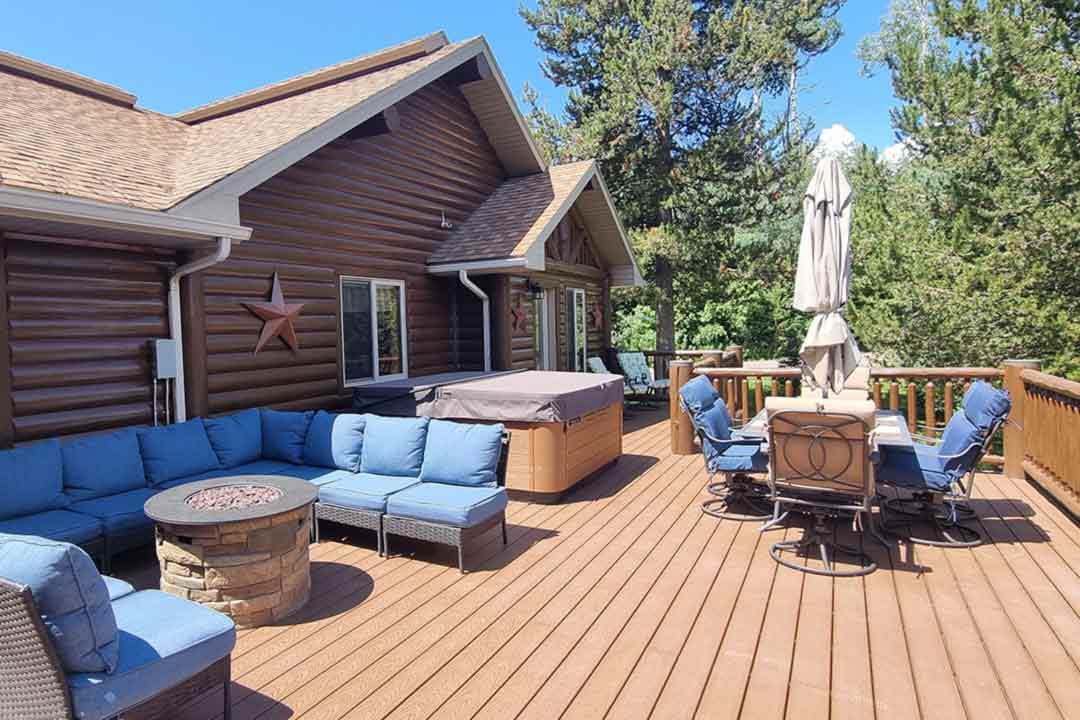Making progress towards a bright future.
PACIFICORP
The largest grid operator in the western United States, we serve the growing energy needs of 2.1 million customers while protecting the environment. Our business units are leaders in providing safe, reliable and sustainable low-cost power.
- Pacific Power serves customers in Oregon, Washington and California.
- Rocky Mountain Power serves customers in Utah, Idaho and Wyoming.
GRID RESILIENCY
PacifiCorp is investing $2.5 billion across our six-state system (Utah, Wyoming, Idaho, Washington, Oregon, California) in wildfire mitigation strategies over the coming years. This includes developing an industry-leading meteorology program, rebuilding portions of the grid with equipment upgrades, and using advanced technology to monitor the system while increasing inspections and vegetation maintenance on our lines. Our investments will make our system more resilient long term for all seasons and weather conditions.
ENERGY IMBALANCE MARKET
PacifiCorp and the California Independent System Operator launched the Energy Imbalance Market (EIM) in November 2014. The EIM uses a sophisticated system to automatically balance demand every five minutes with the lowest cost energy available across the combined grid. By connecting utilities and leveraging diverse renewable resources across the West, the EIM is dramatically lowering greenhouse gas emissions and helping to unlock the full potential of a low-cost, reliable and resilient energy system.
Reduced emissions
Together with our diverse energy investments, the EIM has helped us cut our portfolio carbon emissions by 35 million metric tons.
Customer savings
The EIM reached a new historic milestone, reporting $5.8 billion in cumulative benefits for entities participating in the rapidly growing real-time energy market. At PacifiCorp, we’ve saved our customers $847 million so far, and the savings get bigger every year.
CLEAN ENERGY
Through strategic, customer-focused investments in diverse resources, PacifiCorp’s plan continues to show a reduction in carbon emissions. The 2023 IRP Update preferred portfolio indicates that carbon emissions will decrease by more than 60% from 2005 levels by 2030. Although a higher load forecast and the removal of OTR compliance requirements has extended our emissions reduction timeline in comparison to the 2023 IRP, the 2023 IRP Update resource plan continues to include significant new renewable additions among other diverse, advanced technologies. This path of renewables additions and advanced technologies achieves even deeper decarbonization beyond 2030.
The Integrated Resource Plan Update preferred portfolio includes:
- 9,818 megawatts of new wind resources (including 443 megawatts for Washington and 239 megawatts of small-sale wind for Oregon).
- 4,016 megawatts of storage resources, including batteries collocated with solar generation, standalone batteries, and pumped hydro storage resources (including 101 megawatts of standalone batteries for Oregon and Washington).
- 3,763 megawatts of new solar resources, mostly paired with battery storage, (including 483 megawatts of small-scale solar for Oregon).
- 4,326 megawatts of capacity saved through energy efficiency programs.
- 1,123 megawatts of capacity saved through demand response programs.
- 500 megawatts of advanced nuclear (NatriumTM reactor demonstration project) in 2030.
- 5,385 megawatts of natural gas convertible peaking resources that meet high demand energy needs (including 224 megawatts of renewable-fueled peaking resources for Oregon).
- Installation of carbon capture technology on Jim Bridger Units 3 and 4.
ENERGY GATEWAY
PacifiCorp's Energy Gateway Transmission Expansion Program represents plans to build over 2,300 miles of new high-voltage transmission lines, with an estimated cost of over $8 billion, primarily in Wyoming, Utah, Idaho and Oregon. The over $8 billion estimated cost includes:
- The 135-mile, 345-kV transmission line between the Terminal substation near the Salt Lake City Airport and the Populus substation in Downey, Idaho, placed in-service in 2010;
- The 100-mile, 345/500-kV transmission line between the Mona substation in central Utah and the Oquirrh substation in the Salt Lake Valley, placed in-service in 2013;
- The 170-mile, 345-kV transmission line between the Sigurd substation in central Utah and the Red Butte substation in southwest Utah, placed in-service in 2015;
- The 140-mile, 500-kV transmission line between Aeolus substation near Medicine Bow in Wyoming and Jim Bridger generating facility, placed in-service in 2020;
- The 416-mile, 500-kV high-voltage transmission line between the Aeolus substation and the Clover substation near Mona, Utah, expected to be placed in-service in 2024;
- The 59-mile, 230-kV high-voltage transmission line between the Windstar substation near Glenrock, Wyoming and the Aeolus substation, expected to be placed in-service in 2024;
- The 290-mile, 500-kV high-voltage transmission line from the Longhorn substation near Boardman, Oregon to the Hemingway substation near Boise, Idaho (a joint project with Idaho Power and the Bonneville Power Administration), expected to be placed in-service in 2026; and
- Other segments that are expected to be placed in-service in future years, depending on load growth, economic analysis, IRP results, siting, permitting and construction schedules.





